This review of the Meyer Optik Görlitz 58mm f/1.5 Biotar II will be the 5th review I have written about these new lenses from OPC Optics, the German company that own the Meyer Optik Görlitz brand. I have enjoyed shooting them all so far, and this new 58mm f/1.5 Biotar is no exception to that, not least because of its provenance as a lens formula. That said, I have changed my approach slightly with this review. Unlike the other Meyer lenses which, as manual focus lenses, I have shot exclusively in manual focus, with this lens – for most of my testing at least – I chose to mount it to my Sony with the Techart Pro LM-EA9 and so shot it almost entirely as if it were an autofocus lens.
Of course, that shouldn’t really impact on the quality of the output of the lens. The results I achieved are – for the most part – little different to the results I would have achieved if I had shot it manually. Autofocus has simply added a different dimension to my shooting experience – one that I will definitely be touching on as part of the review… And this is not least because I have actually found the whole shooting experience to be fractionally more enjoyable, and that’s despite the AF adapter letting me down a few times.
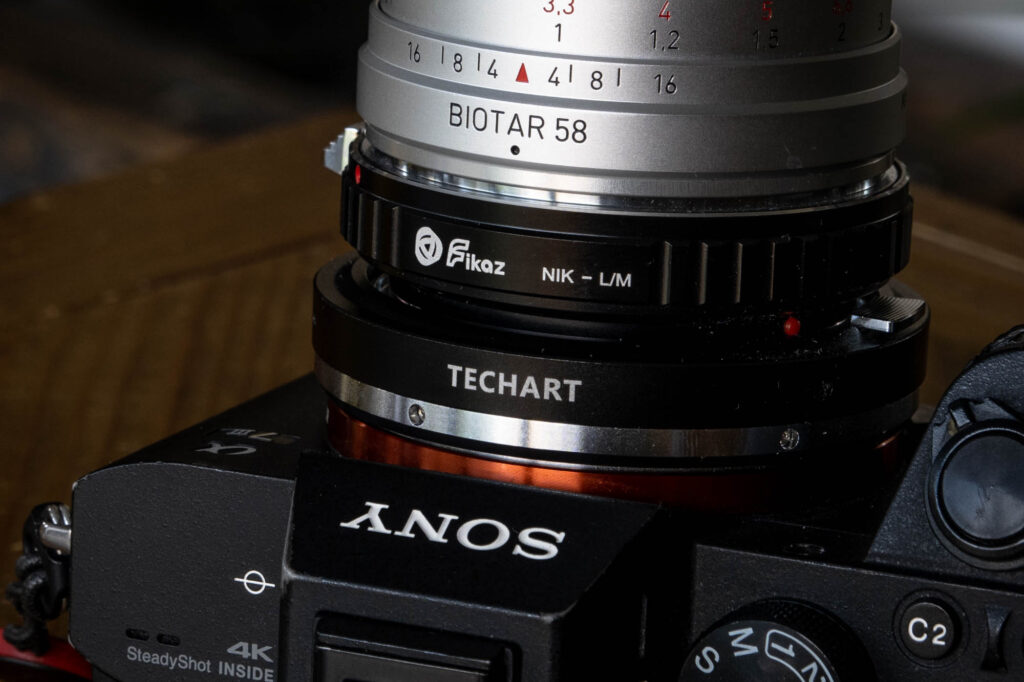
Anyway, I’ll come back to that later. First I will talk about the 58mm f/1.5 Biotar itself. For each one of the new Meyer lenses I have reviewed, I have commented about my knowledge and/or experience of the lens it’s based on. In this case, the lens it’s based on is the Biotar 58mm f/2. If you are not aware of this lens, get yourself over to CP and read this excellent article by Cheyenne Morrison featuring some work by master of the classic lens, Adolfo Rozenfeld. This, for me, gives this lens a bit more of a mountain to climb in terms of living up to the reputation of its predecessor. Not only was the original Biotar made for years and is a very popular lens with vintage lens aficionados today, it was also the basis for the Helios 44, a Russian Biotar copy. This is particularly pertinent, I think, as the Helios 44 is almost the ubiquitous vintage lens. There’s so many of them about, and they are so cheap, and have such a strong character that they are pretty much the entry drug for anyone looking to explore classic lenses.
Of course, the ubiquitous (and cheap) nature of the Helios, not to mention the fairly common and easy to get hold of nature of the Biotar gives – as I’ve alluded – this new 58mm f/1.5 Biotar a lot more competition. There really is a lot of these old lenses on eBay, so why would anyone pay the premium for this new version?
Fluff?
I guess that’s the questions that Meyer tried to answer when making this new version of the 58mm Biotar. They certainly try and answer it in the marketing blurb on the Meyer website where they say,
“Through intensive development work, the image language, the bokeh and the other popular characteristics of the original Biotar 58 f2.0 could be retained and at the same time the speed has been increased to f1.5.”
They also go on to claim that,
“…the Biotar 58 II, through various optimizations of the optical system, achieves a sharpness that its predecessors could not reach.”
In short, they claim to have made it both faster and sharper than the original lens. Quite the claim. Though with modern optical design technology, definitely not out of the question.
Reality
At this stage, I’d love to be able to definitively agree or disagree with this statement. Unfortunately, I can’t. In reality – and I say this from the perspective of someone who is working on a project that’s bringing a reformulation of an old lens to market myself – making these claims is one thing, backing them up is another. The reality is, there’s so many versions of the older Biotar, and so much copy variance, that it could only ever be an educated guess on their part that they have bettered any and every previous 58mm lens that bore the name Biotar. And on my part, whilst I have shot the odd Helios, and I am fairly familiar with the overall look the Biotar and Helios lenses produce, I certainly don’t have the level of experience to prove or disprove the statement.
Optical Characteristics
So what can I say? Well, for a start, I can tell you that despite being near a stop faster than the older versions of this lens, even wide open, and at close distances, the 58mm f/1.5 Biotar is really nice and sharp in the centre. That said, at f/1.5 the area of “nice and sharp” is quite central. Of course it expands as you stop down, and by f/5.6 it’s much more easily useable across the whole frame.
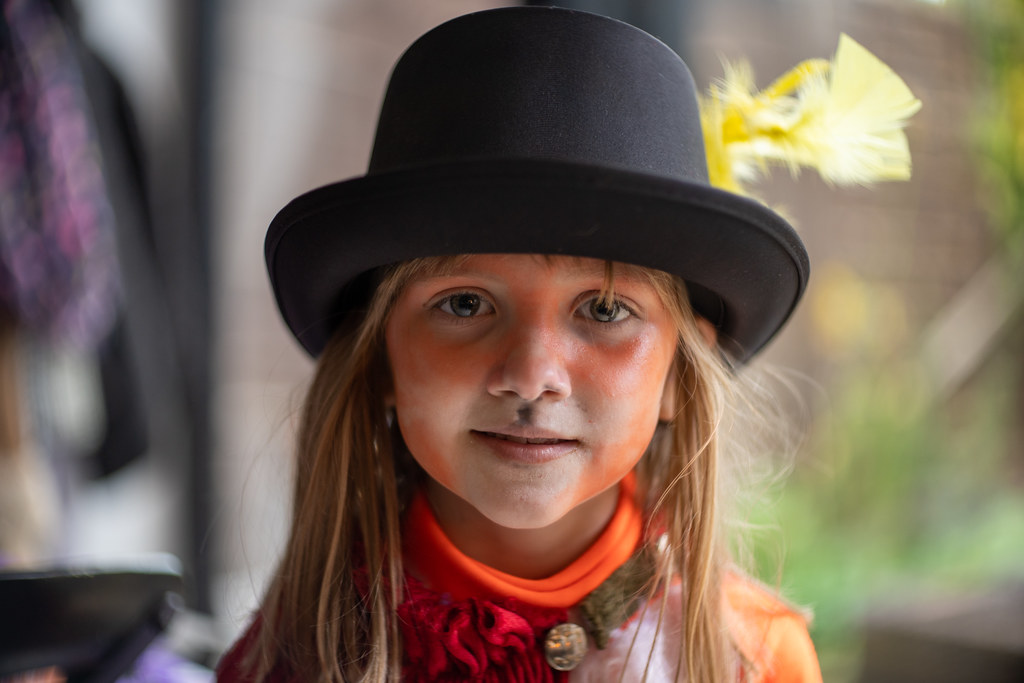
At further distances I found the area of central sharpness to be smaller than at closer distances, though there is a chance that this is more down to the fact that at further distances the plane of focus tends to expand into the corners whereas at closer distances I tended to shoot more isolated subject matter (eg portraits) where the edges were out of focus anyway.
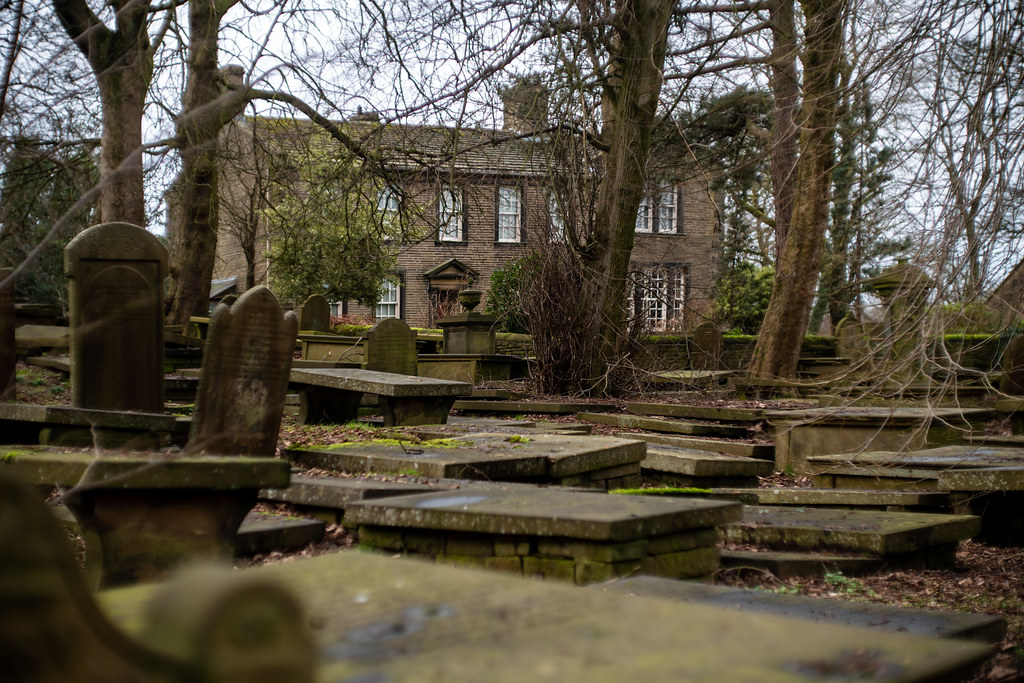
Contrast is also nice and high even from wide open. Equally, the colours are nice and strong. This is possibly the biggest differentiator from the original Biotar lenses which are – at least in my experience – at very least slightly lower contrast wide open. I guess this is the benefit of modern coatings.

There’s lot else to be said about how the 58mm f/1.5 Biotar performs wide open too. For a start, it vignettes like crazy wide open where there’s a strong but gradual darkening from mid way toward the edges. Then the extreme corners very quickly dip to darker shadows – though I found this to be less of an issue when mounted on the Nikon D700, so I wonder if this might be a product of mounting the lens in the way I did with my chosen adapters somehow…? Either way, stop down even as little as f/2 and this effect is dramatically reduced. EDIT: Since writing this review, I have discovered that the darkening to near black in the extreme corners is indeed a product of using this lens with an adapter on the LM-EA9.
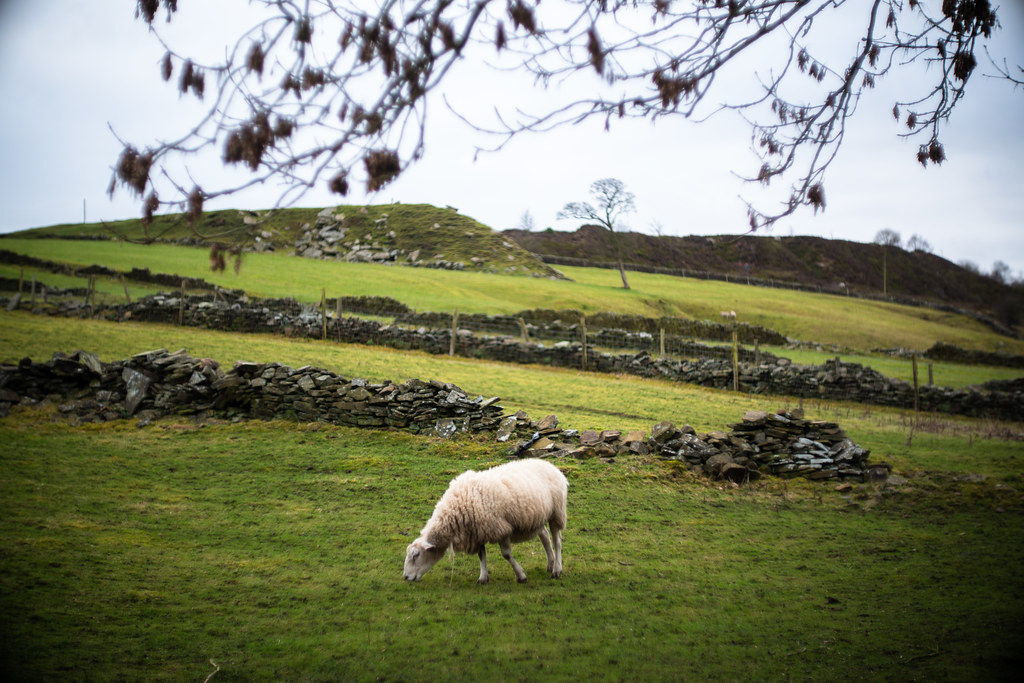
And then, of course, is the bokeh which – as you might expect if you know anything of this lens’s provenance – swirls really nicely given the right sort of specular background and subject distance.
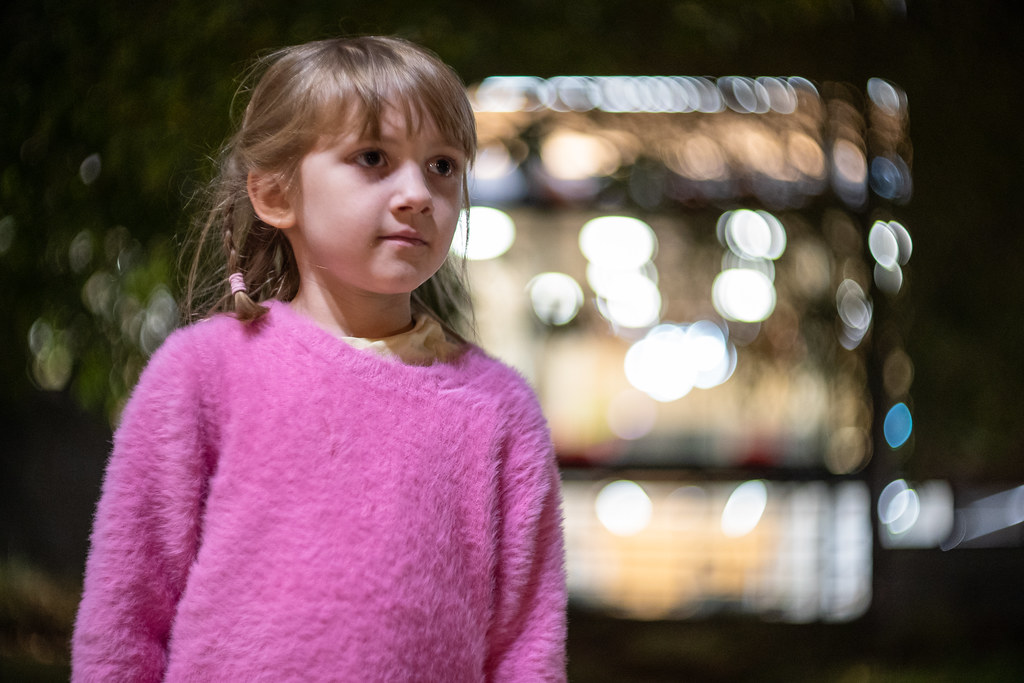
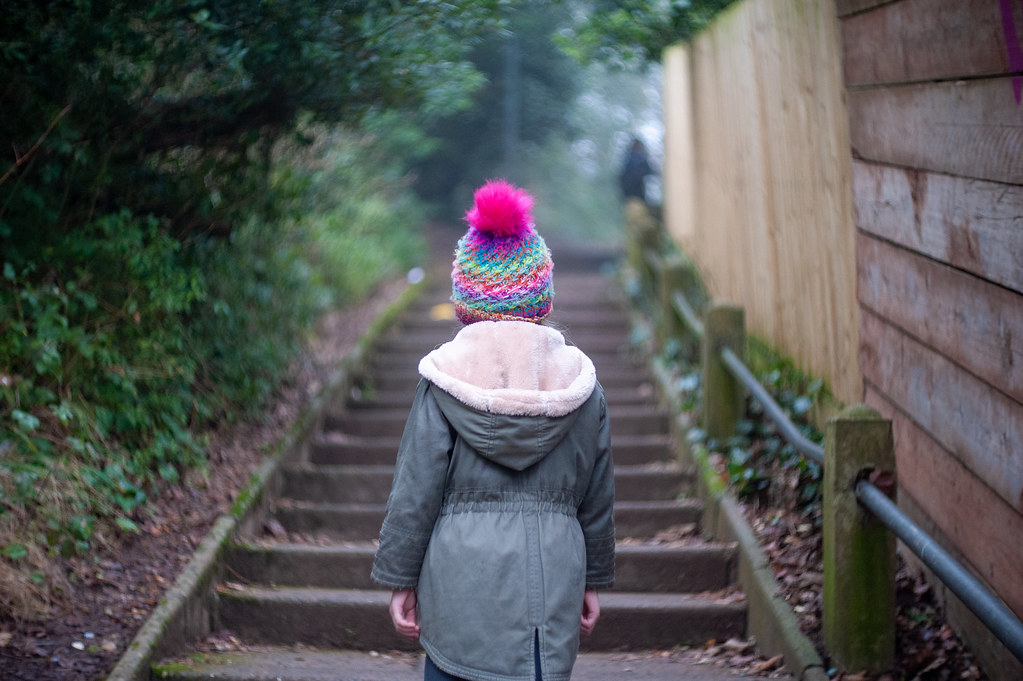
Given a less specular background, it’s also really nice and smooth.
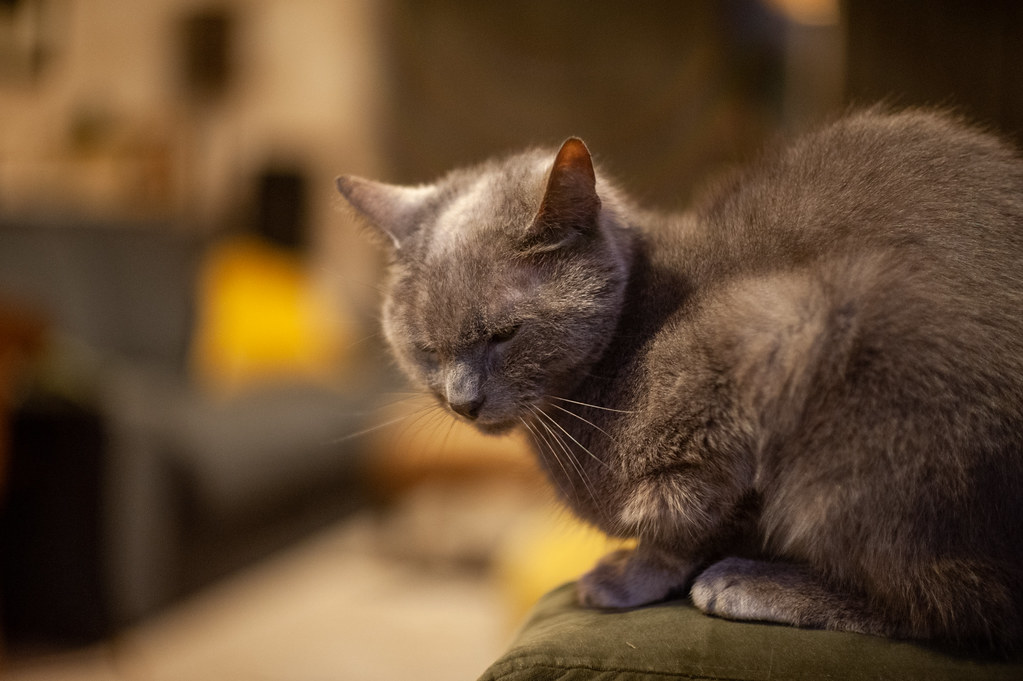
Even stopped down – thanks to the fact that the iris has many blades – specular highlights are more circular than angled, at least they are toward the centre. Toward the outside of the frame they get more cats-eyed in shape.
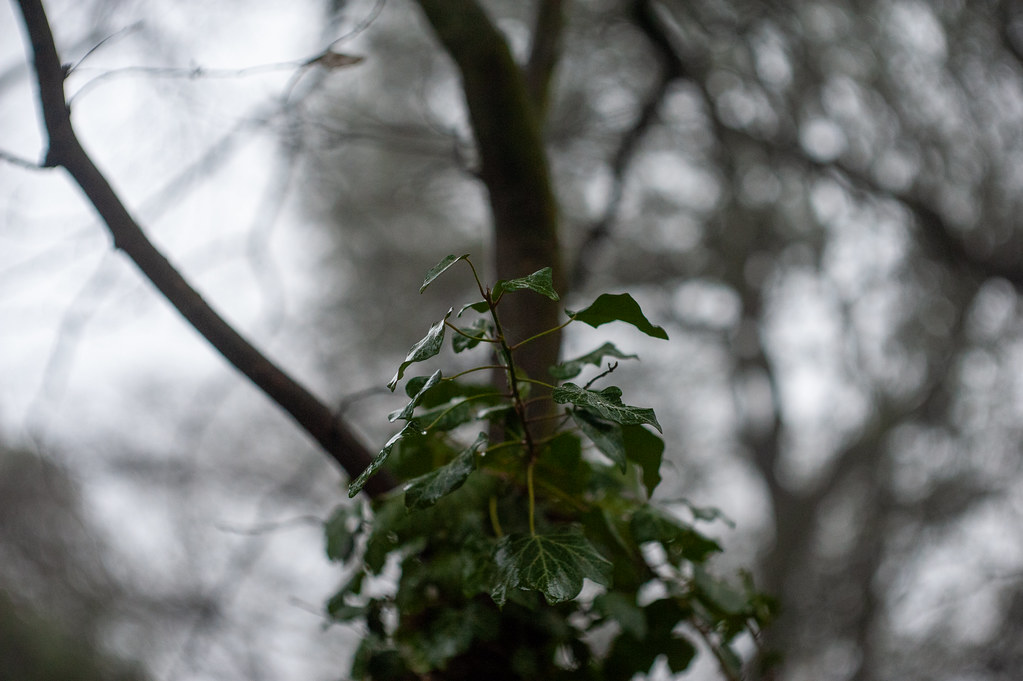
In fact, the only thing that lets the 58mm f/1.5 Biotar down when it comes to the bokeh is the 70cm minimum focusing distance which seemed a little far. Of course, this is where the AF adapter comes in handy as with the extra 4.5mm of focusing travel that brings to the table, I was able to focus a lot closer and get myself some even more smoogy (technical term) bokeh. Surprisingly, central sharpness doesn’t degrade much when focusing closer, which makes me wonder why they didn’t bother to just make it a closer focusing lens…?

Barrel distortion is another prominent factor in this lens’s character. Again, I can’t be 100% certain, but it seems to me that barrel distortion is stronger when focusing closer. Personally, I quite like the effect, and it’s not like this lens is going to be anyone’s first choice for traditional architectural work, so let it be a trait to harness, I say.

The final character trait I wanted to give a shout out to is the flare. I actually found it to be largely flare resistant, though I did manage to capture this shot of my wife with this blast of rainbowed flare.
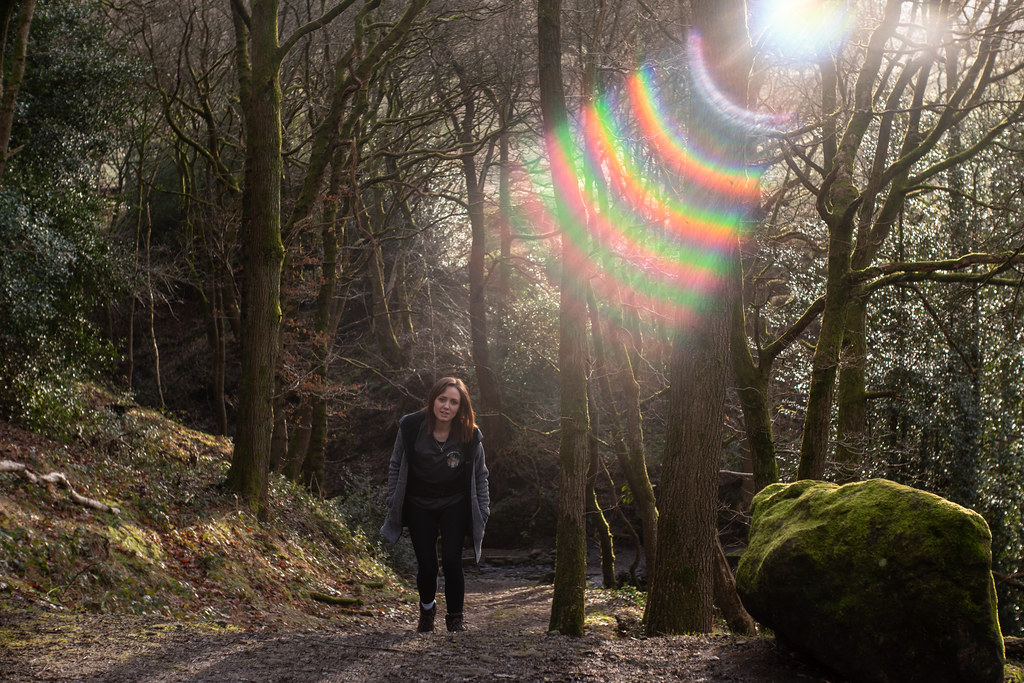
And a few of these of the kids playing with sparklers. It seems that with a high intensity light subject just our of frame, these rainbows happen.
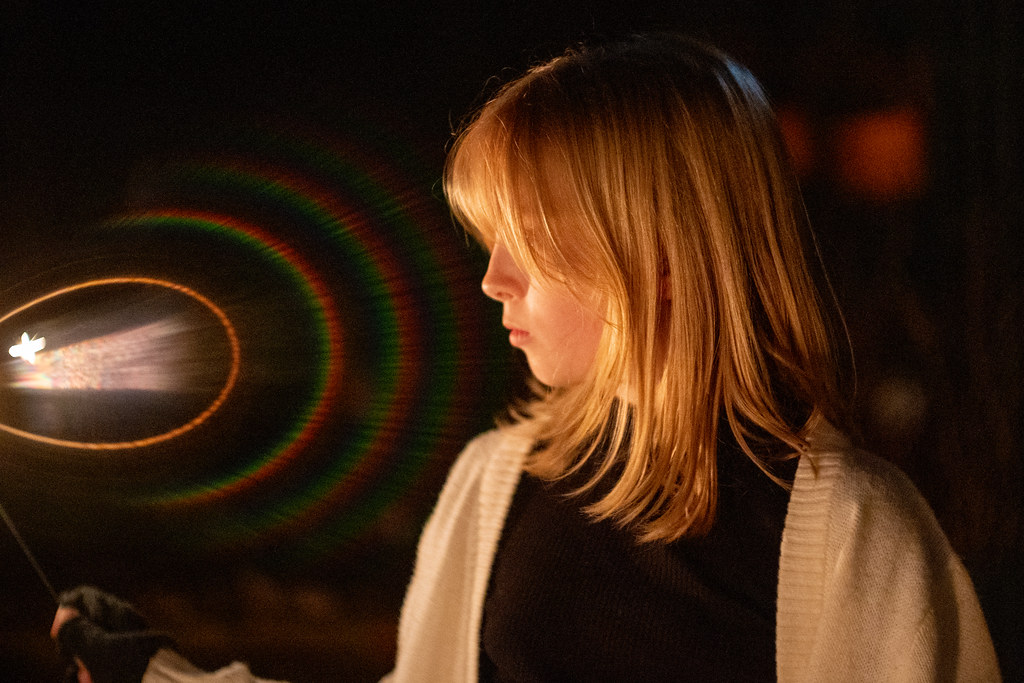
I should say, I think both of these were without the lens hood in place. They’re also not very easy to trigger – in this last example where I thought I would get some rainbows, I couldn’t make them happen.
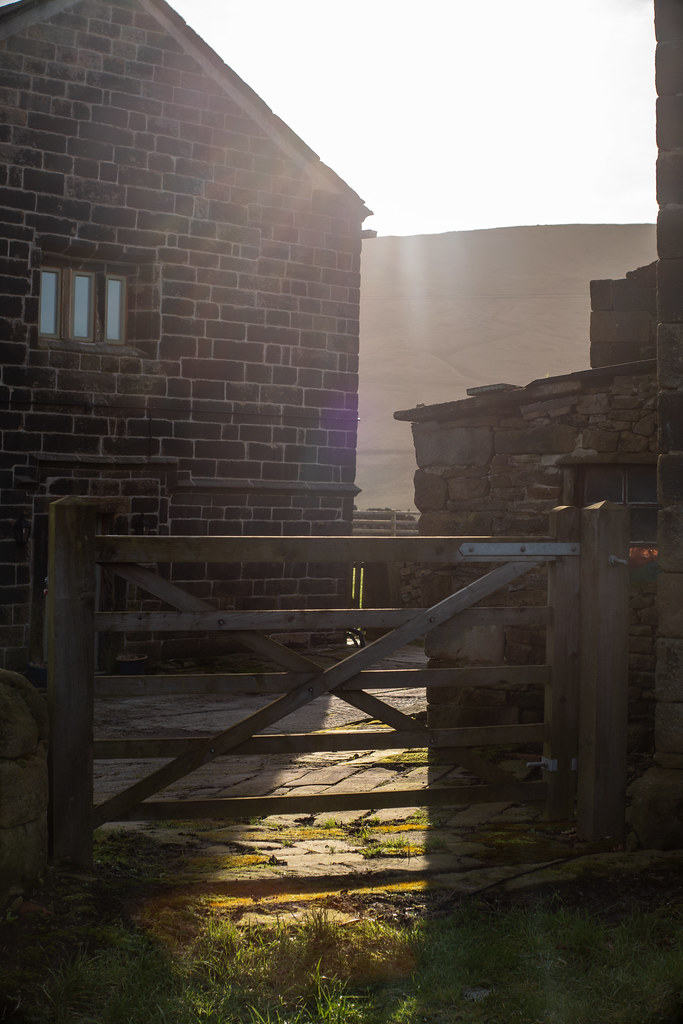
Finally, due to a little bit of contrast reduction that I noticed centre frame when shooting at f/8 without the hood, I would recommend keeping the hood attached for more general purpose use. See just above the sheep here:
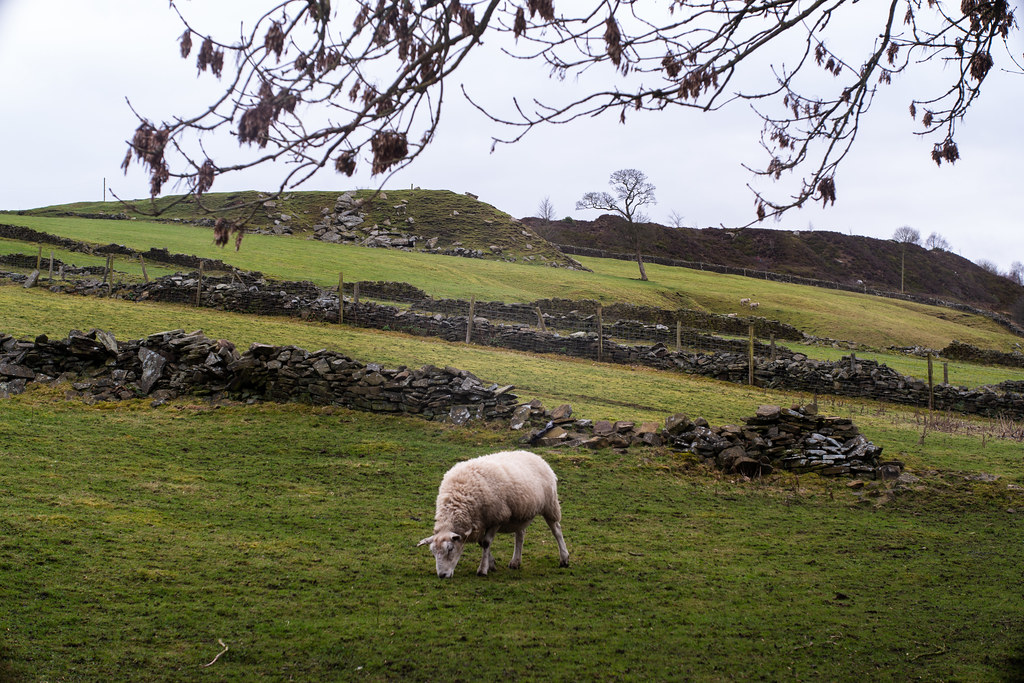
The Overall Effect
Wide open, the 58mm f/1.5 Biotar is wonderfully characterful and is superb for isolating a central subject. There is perhaps some caution to be had in shooting off-centre subjects, but actually I didn’t find the fall off of focus so dramatic that it would readily ruin an off-centre portrait. I think if you’re shooting a lens like this, you should perhaps expect this sort of limitation anyway, and I’d definitely say this lens is more forgiving than some when framing off-centre.
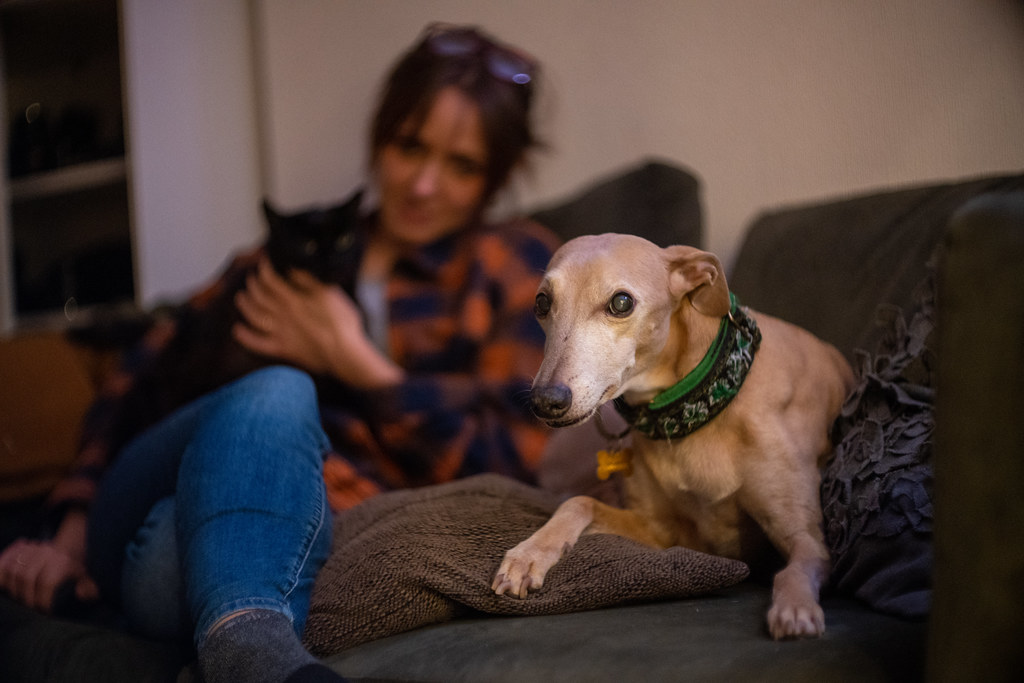
I also found the fall off of focus to have a really nice effect on slightly further subject matter. Combined with the shallow depth of field and the vignette, I found shooting subjects such as this greenhouse to give me an aesthetically pleasing result. Without going overboard like you might with a tilt lens or lens baby for eg, the eye is definitely and quite naturally drawn to the greenhouse I think, despite it being a complicated and messy composition.
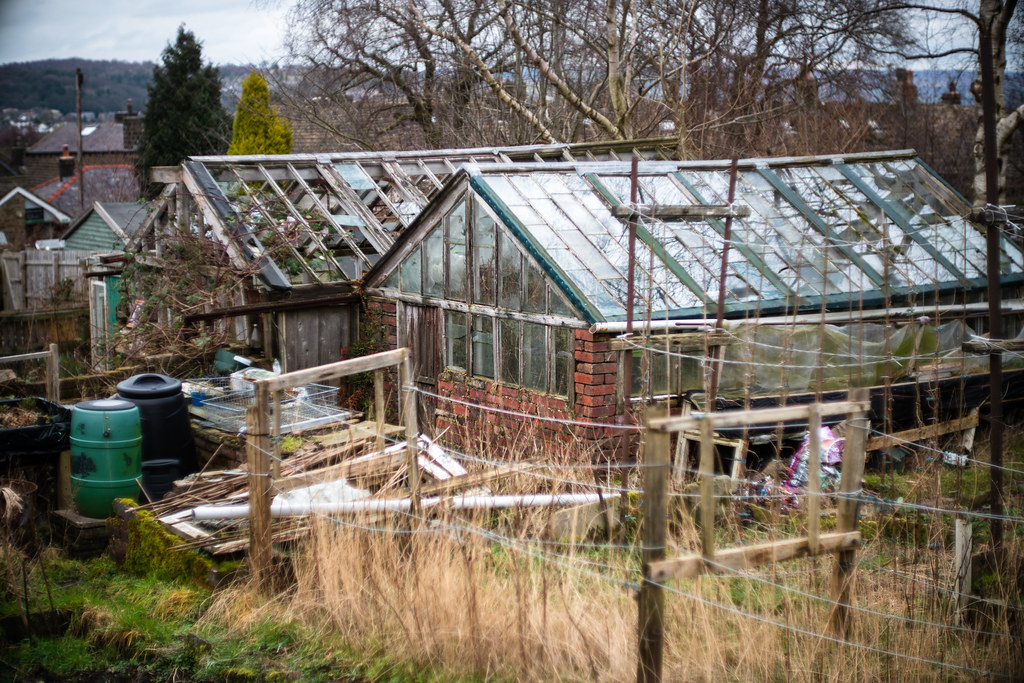
And then of course there’s the swirl. Find those circumstances where it becomes part of the equation and it’s really effective I think. Not least because even wide open there’s plenty of contrast pop to really separate your subject matter from the background.
Compared to the Primoplan
Since Meyer make two 58mm lenses, I thought I would share a few thoughts on the difference. To me, I would say the 58mm f/1.9 Primoplan is more of an extreme character lens. Wide open I got some really striking photos with that lens, though it is harder to focus and the sharpness fall off from the centre is a lot steeper. The 58mm f/1.5 Biotar has less fun flare – or at least it’s much more difficult to trigger. It’s also easier to focus and gets sharper into the corners quicker. The bokeh from the Biotar is calmer looking too. Both are wonderful lenses, but I’d definitely recommend reading both my reviews and perhaps trawling the internet for other people’s thoughts if you are u sure which is right for you. For me, I’d probably go for the Biotar as I found it easier to use – it just feels like more of an all-rounder. For others the pay off in terms of character – especially the flare and more hectic feeling bokeh – from the Primoplan might just swing it into favour.
Build quality
As mentioned, the 58mm f/1.5 Biotar is the 5th of the new Meyer lenses that I have shot. Of the four previous, only one of them, the 100mm Trioplan, didn’t feel perfectly smooth to focus, and when I mentioned this to Meyer they told me they had already fixed the issue. The Lydith, and both 58mm and 75mm Primolans felt great to focus, and the Biotar is no exception.
With that said, obviously having had it mounted to an AF adapter the amount I have been focusing it manually has been less. In fact, for the large part, I’ve only really had to focus it for closer-up shots where using it with the AF adapter gives that added close-focusing capability. When I have used it though, I have been impressed with the feel. It’s lovely and smooth to focus. As indeed is the aperture control which is unclicked.
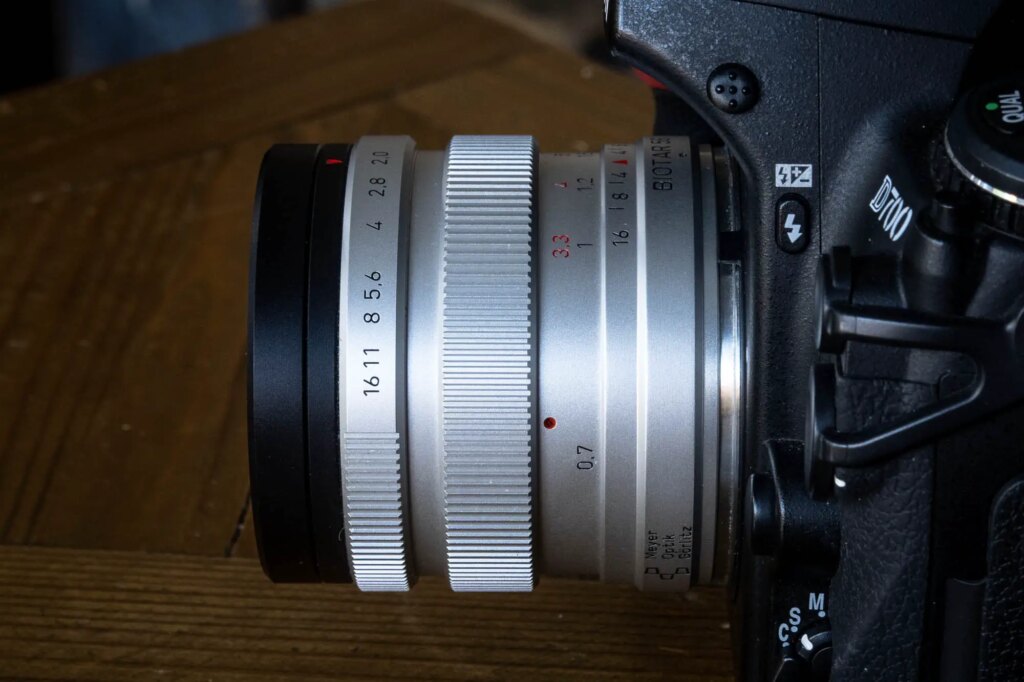
Unfortunately, when I have found need to focus, either when close-up focusing or when briefly mounting it on my Nikon D700, I have fallen foul of the same issues I have had with all of the Meyer lenses. The first “issue” is the length of the focus throw. Your mileage maybe vary, but from close focus to infinity there is a fairly long throw that I find a little too much for quicker focusing. The second more universal issue is that when grasping the lens, the focus and aperture control are easy to confuse. With the aperture being unclicked, the knurling being the same, and the aperture being only slightly more damped, there’s been a number of times when I have turned the wrong control. This has especially been the issue as due to using the AF adapter so much, I haven’t had so much of an opportunity to get used to handling the lens. With more time, I’m sure I’d get over this.
No communication
I think it’s also worth noting – especially if you are otherwise unaware of these lenses – the mounts are dumb. That is to say, there is no mechanical communication between lens and camera at all. This is regardless of the mount you choose and the camera you connect it to. This is especially worth noting if you’re planning to mount the lens to anything other than a mirrorless camera.
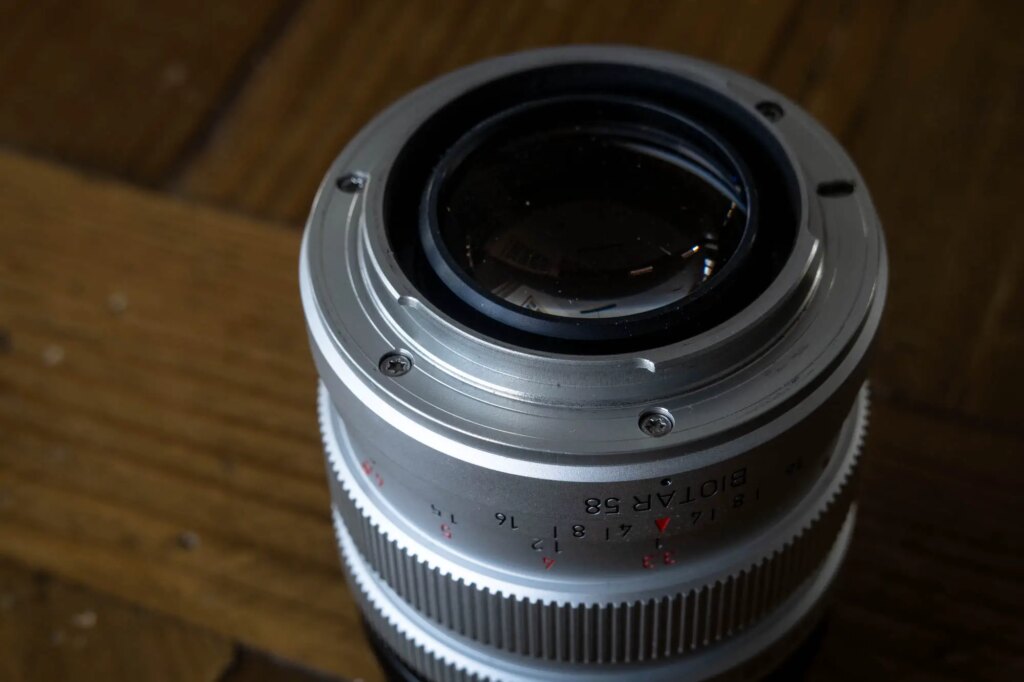
On mirrorless cameras, they work perfectly as the camera just adjusts to the light coming through the lens. Stop the lens down and the exposure adjusts accordingly, as does the image on the screen on the back. Mounting the lens to a camera that expects the lens to mechanically communicate the set aperture to the camera, and you have a different story. Without that mechanical connection, the viewfinder of the camera darkens as you stop down which can obviously make framing and focusing more difficult. On manual focus cameras, for eg, the focusing screen will eventually black out.
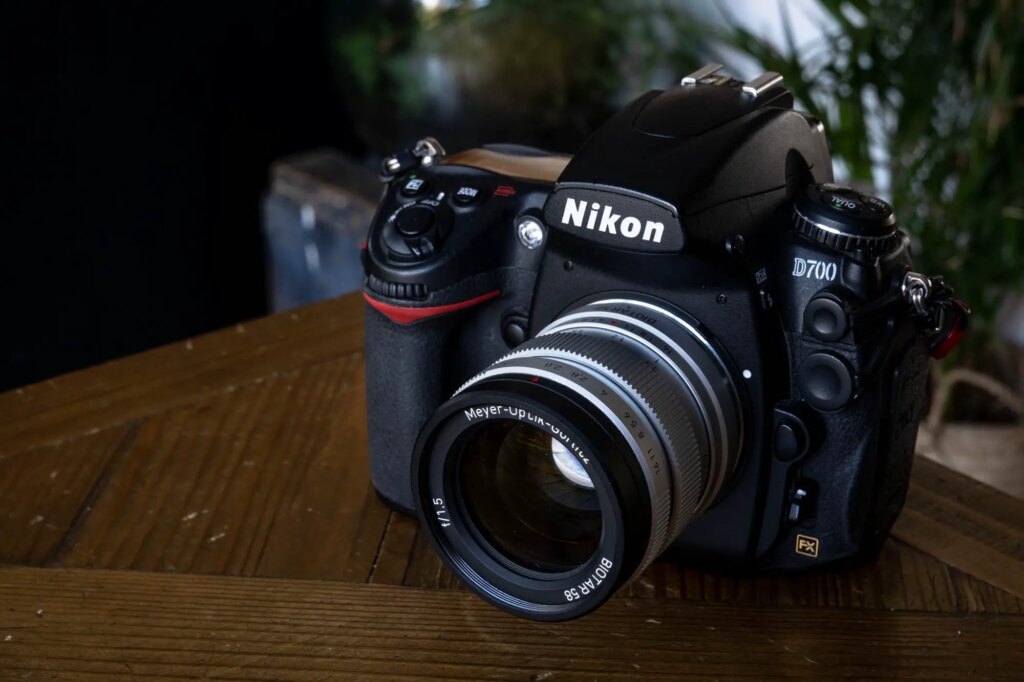
Compatibility
Despite these limitations though, the one great thing about a completely dumb mount is that it’s very easy to mount across different bodies and even mounts. As a Nikon mount lens, there was no issue mounting this copy of the 58mm f/1.5 Biotar on either my Nikon D700, my F2 (before it broke) or my F (for the benefit of the picture below). I was also easily able to mount to my Leica M10-P with the Nikon-to-Leica adapter and my Sony with the Nikon-to-Leica adapter then the Leica-to-Sony AF adapter. Being a Nikon mount – thanks to the longer flange back distance of Nikon cameras – I could have also mounted this lens to a Canon EF camera for eg. Something to maybe think about when choosing the mount you buy the lens in.
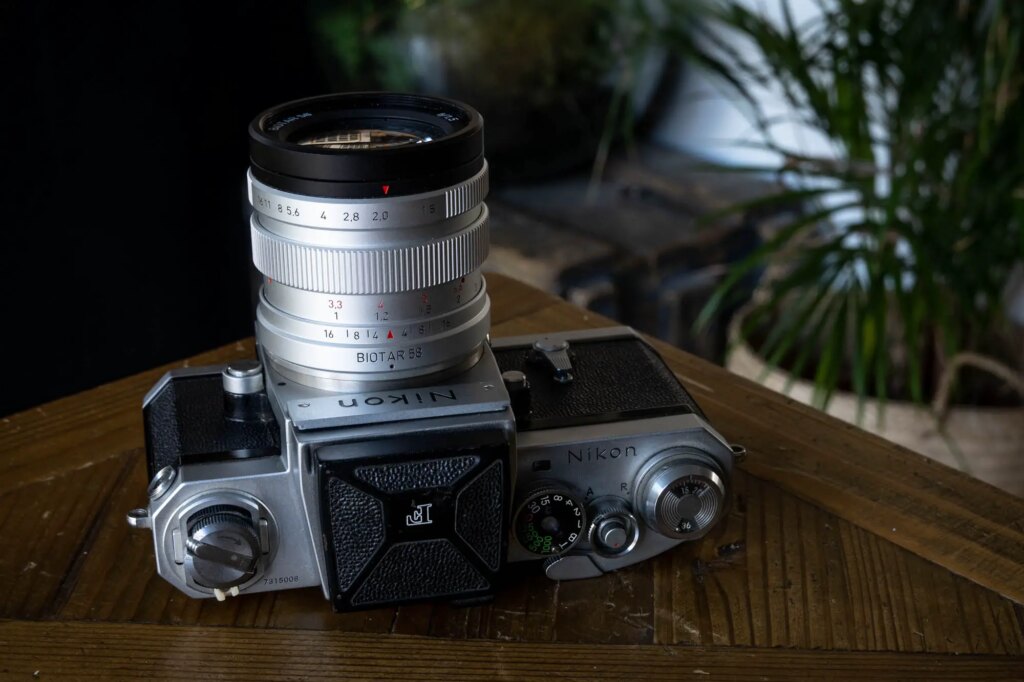
Autofocus Shooting
As I mentioned, there isn’t much to say about how the autofocus adapter impacted the image quality. Of course there’s the fact that it allows the 58mm f/1.5 Biotar to be focused a lot closer which is a distinct advantage. Not having to rely on focus peaking also makes for a more pleasant shooting experience. I definitely get used to having red edges on everything that’s in focus when using manual focus lenses on my Sony cameras, but not having to have those red edges definitely increases the user enjoyment. The downside is putting too much trust in the autofocus when trying to shoot relatively quickly. Sometimes, for inexplicable reasons – especially with this lens for some reason – I found it to often focus closer than it should have. This shot is a good example. Actually, I ended up quite liking the fall off of focus down the hill, but this was definitely an accident and one that I blame on the AF adapter.
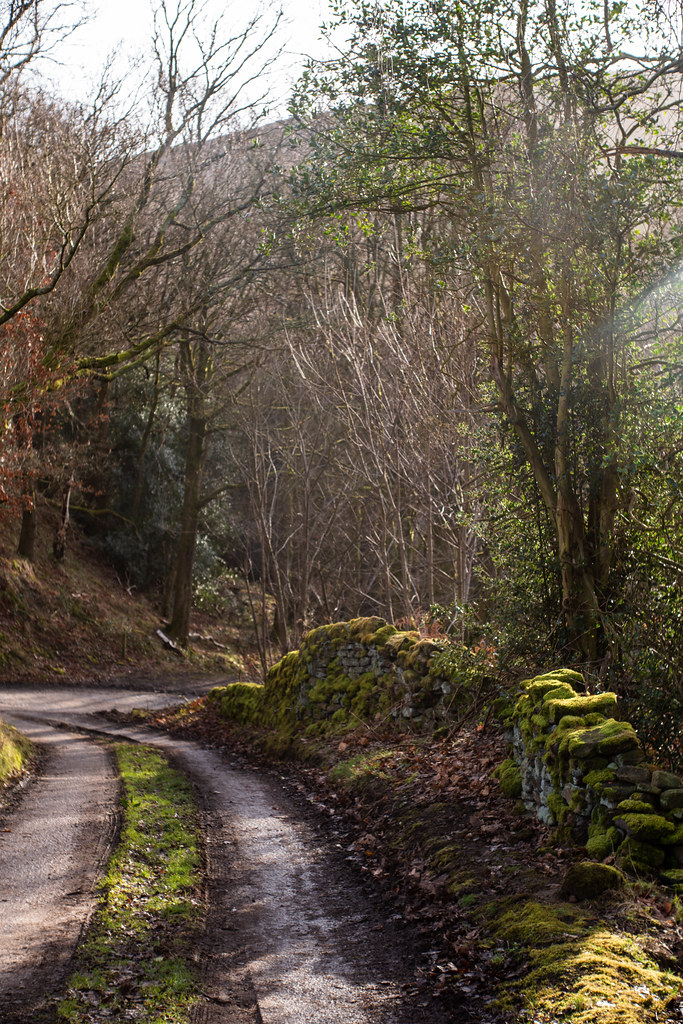
I think it’s also worth noting the impact on focus throw and less frequent contact with the lens. The AF adapter meant I didn’t have to deal with the long focus throw which definitely sped up my ability to focus, but being less familiar with the feel of the lens meant the learning curve toward not grabbing the aperture control instead of the focus would take me a lot longer.
Overall though – especially when comparing my experience to shooting the Priomplan where I had to caveat at least a couple of my test shots with the fact that I’d missed focus – I’ve really enjoyed shooting the 58mm f/1.5 Biotar with a Techart Pro LM-EA9 adapter. Again, your mileage might vary, but I love the fact that these esoteric lenses can be shot in this way. As someone who’s really been enjoying autofocus for a little while now, it definitely increased my enjoyment (and hit rate – especially for portraits).
A Few More Photos
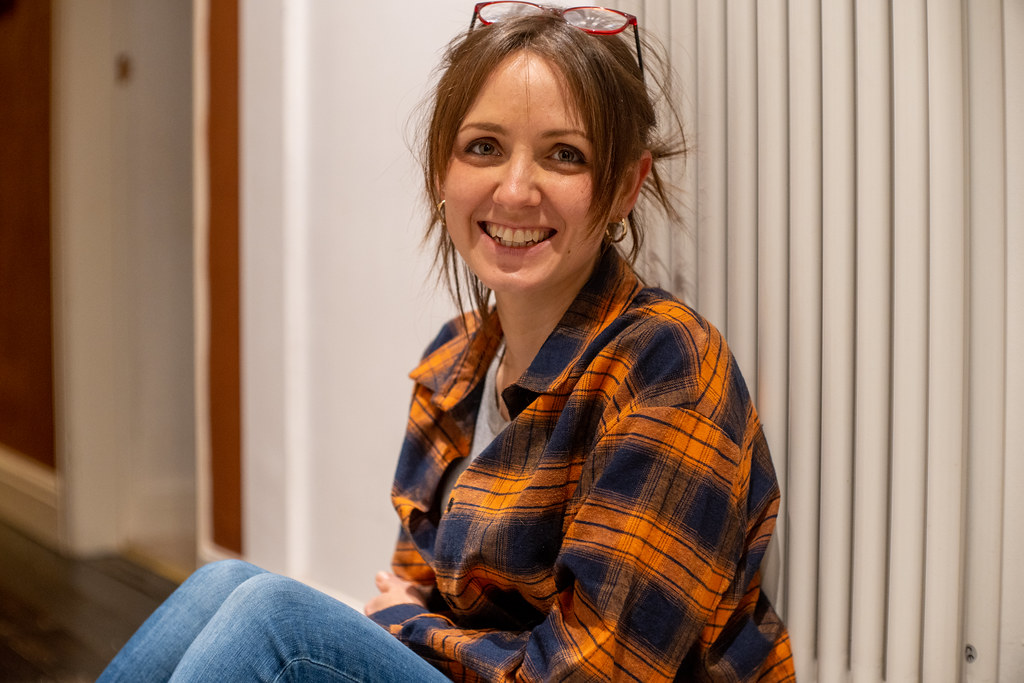
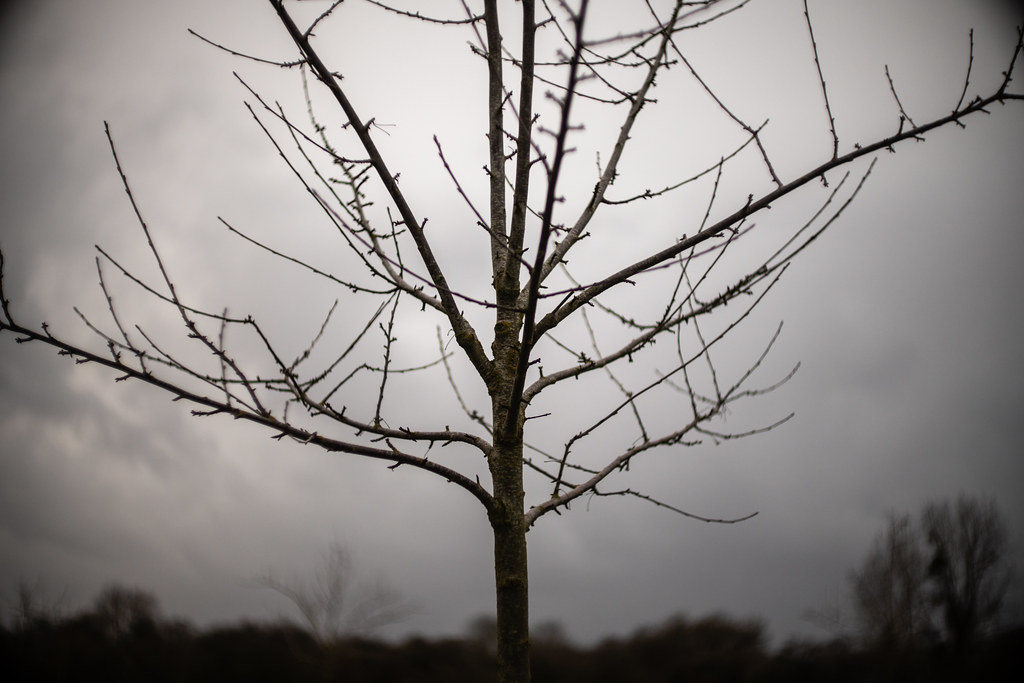
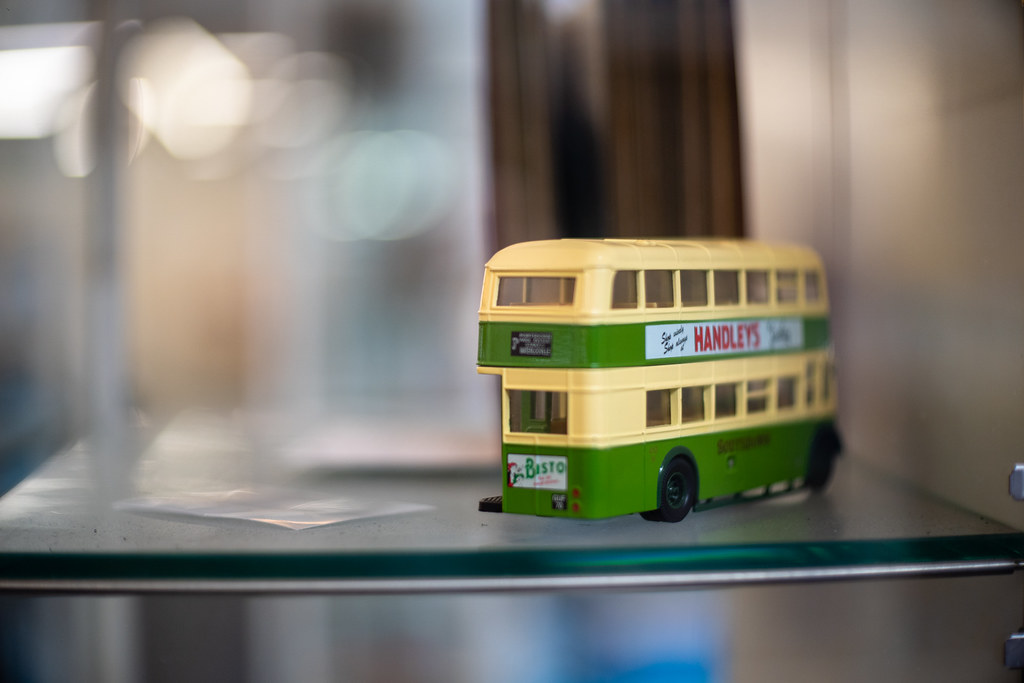
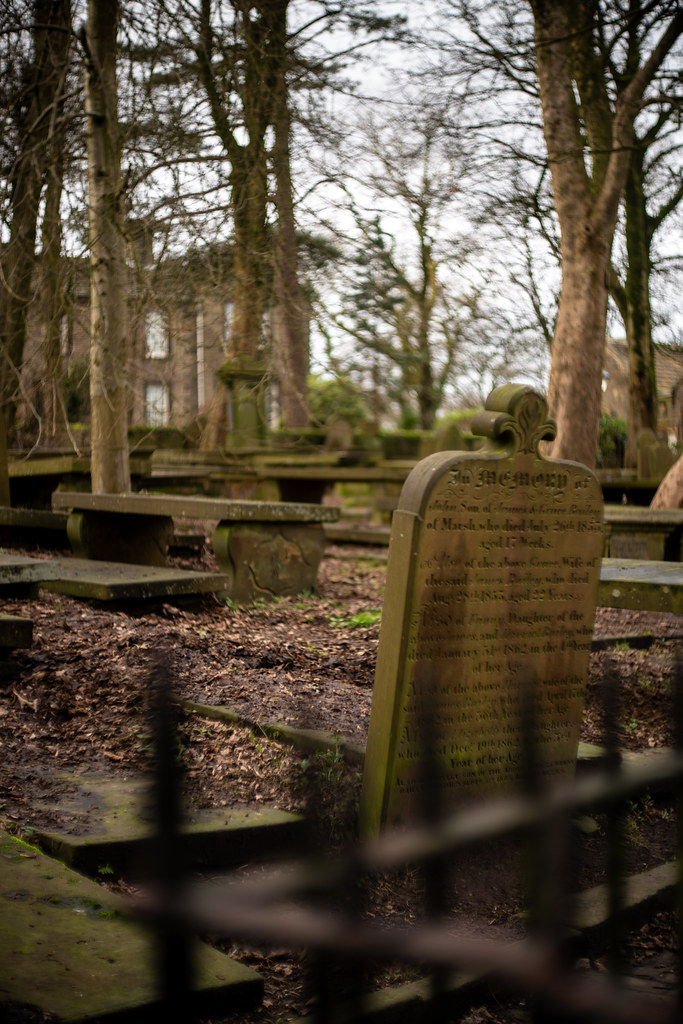
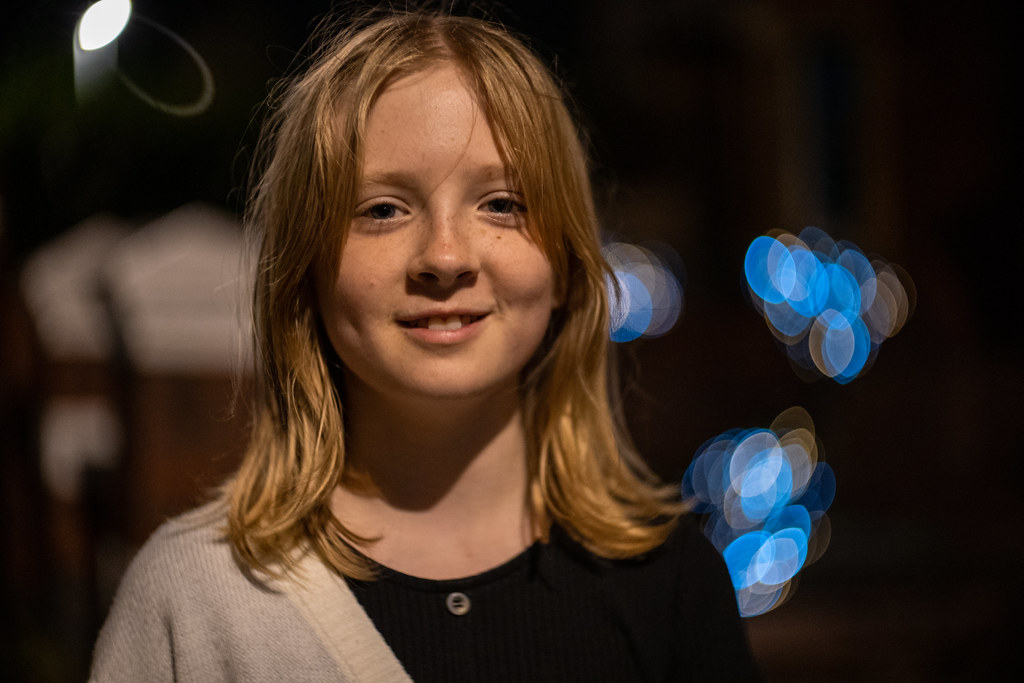
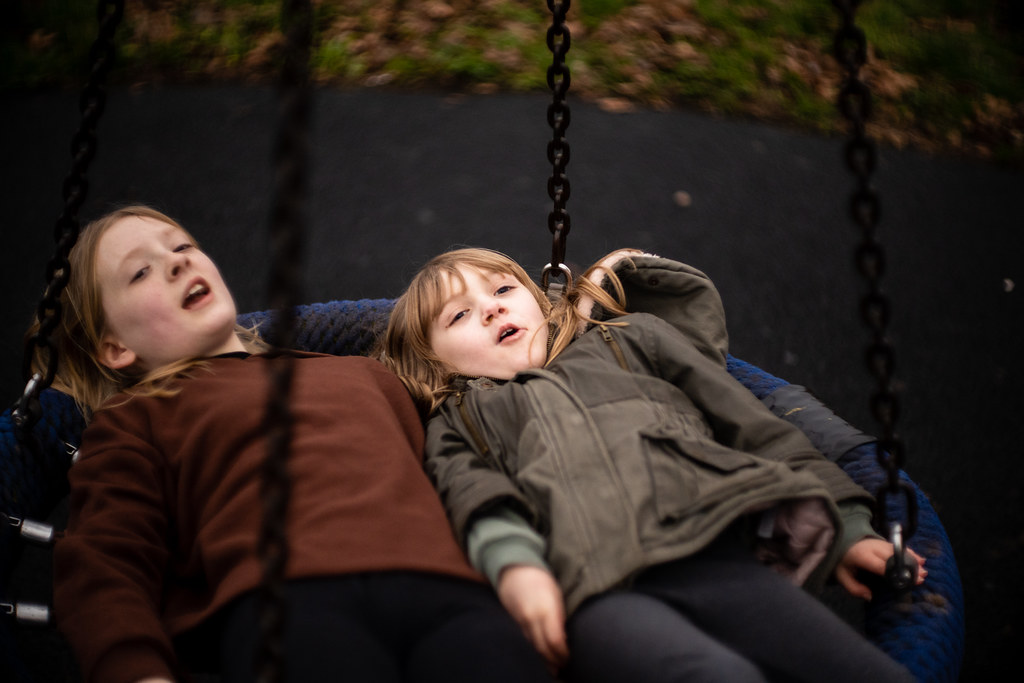
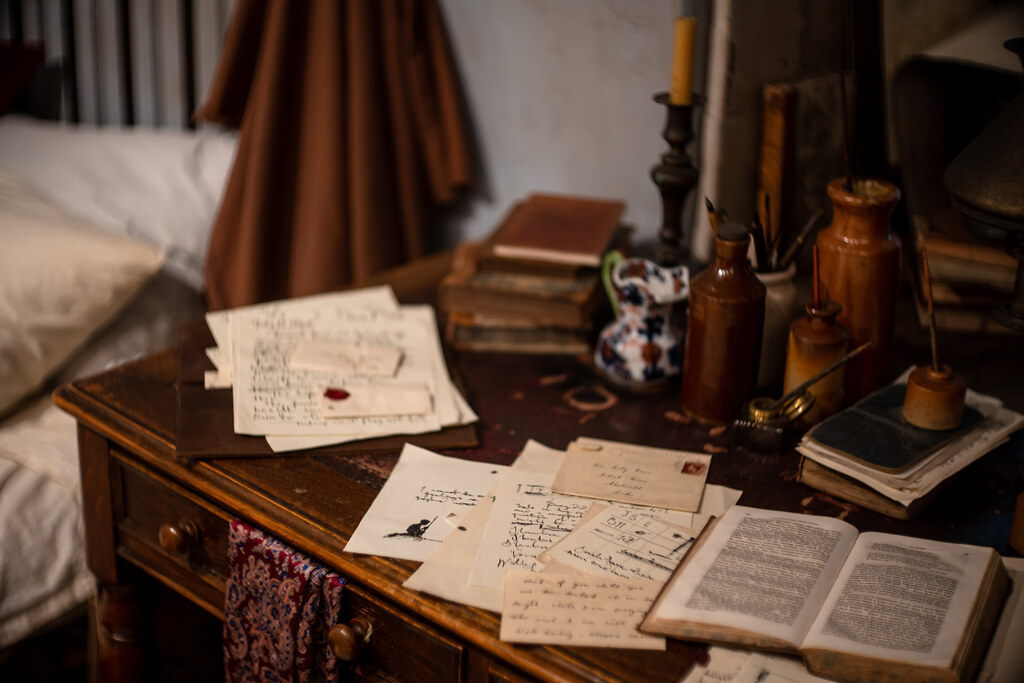
Final Thoughts
I can’t really help but praise these new Meyer lenses. I think OPC Optics are doing a fantastic job of bringing new life to old formulas. Yes, you can go on eBay and buy yourself an old Biotar lens and – assuming you don’t get a duff one – find yourself with a lens that creates wonderful images. If you’re really lucky you might even find an old Helios in good condition and get some lovely optical character traits for a tiny amount of money. I’m not sure about now, but there was a time you could pick up a Helios for less than £10, which is approximately 1% of the cost of the 58mm f/1.5 Biotar. There will always be those out there who give this as being the reason that they would never spend the cash on these more expensive new lenses.
For me though, this perspective completely ignores the fact that these new lenses are, well, new. They’re new in the sense that they don’t come with potential issues of haze, dust, or any type of optical or mechanical degradation. If you buy one new, they come with a warranty too. That aside though, they are also new in terms of the optical quality and performance. I’ve said it before, and I will say it again. I love the combination of older optical formulas tweaked with the aid of computers for increased optical performance and then coated with modern lens coatings.
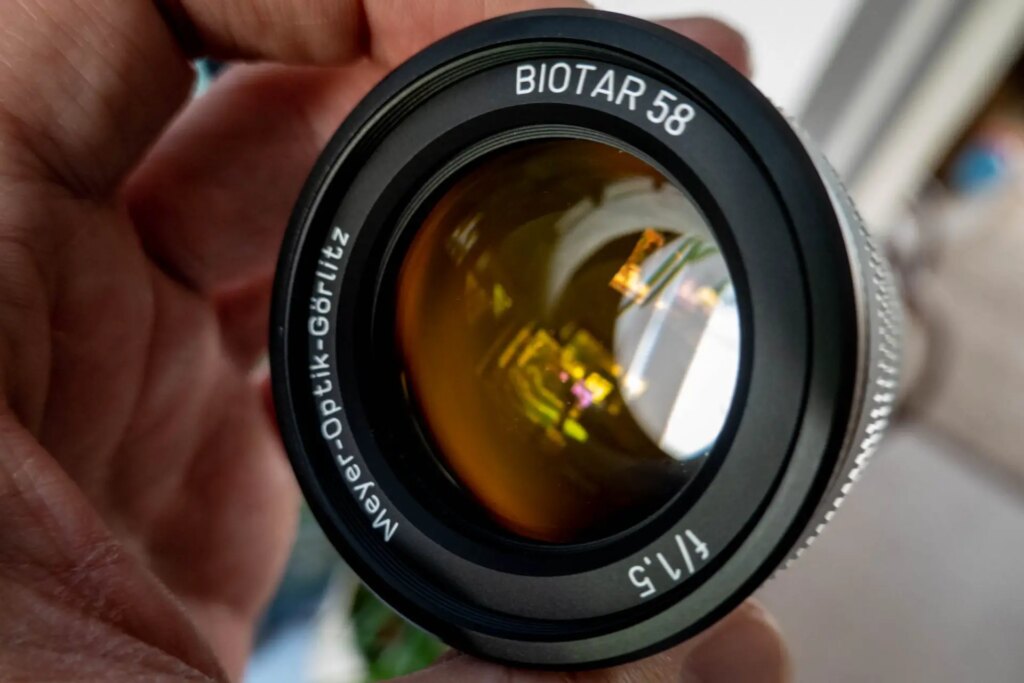
The 58mm f/1.5 Biotar might well be a take on the older formula lenses – they are right too, it certainly seems to lean strongly into the character traits of the older lenses – but, it’s also a lens in its own right. It’s sharp, even wide open. Even shooting it closer up than it’s designed to be shot gives sharp results wide open. It also has great colours and contrast from wide open, and especially with the hood in place flare is seemingly very well controlled. The bokeh it produces is also really lovely. And finally, at least in my experience, it’s quite forgiving as a character lens.
All this adds up to the 58mm f/1.5 Biotar being a fast, versatile character lens that makes a nod to its provenance whilst also standing alone as something unique in its own right. What’s not to like?!
You can read more and buy the lens from the Meyer website here
Share this post:
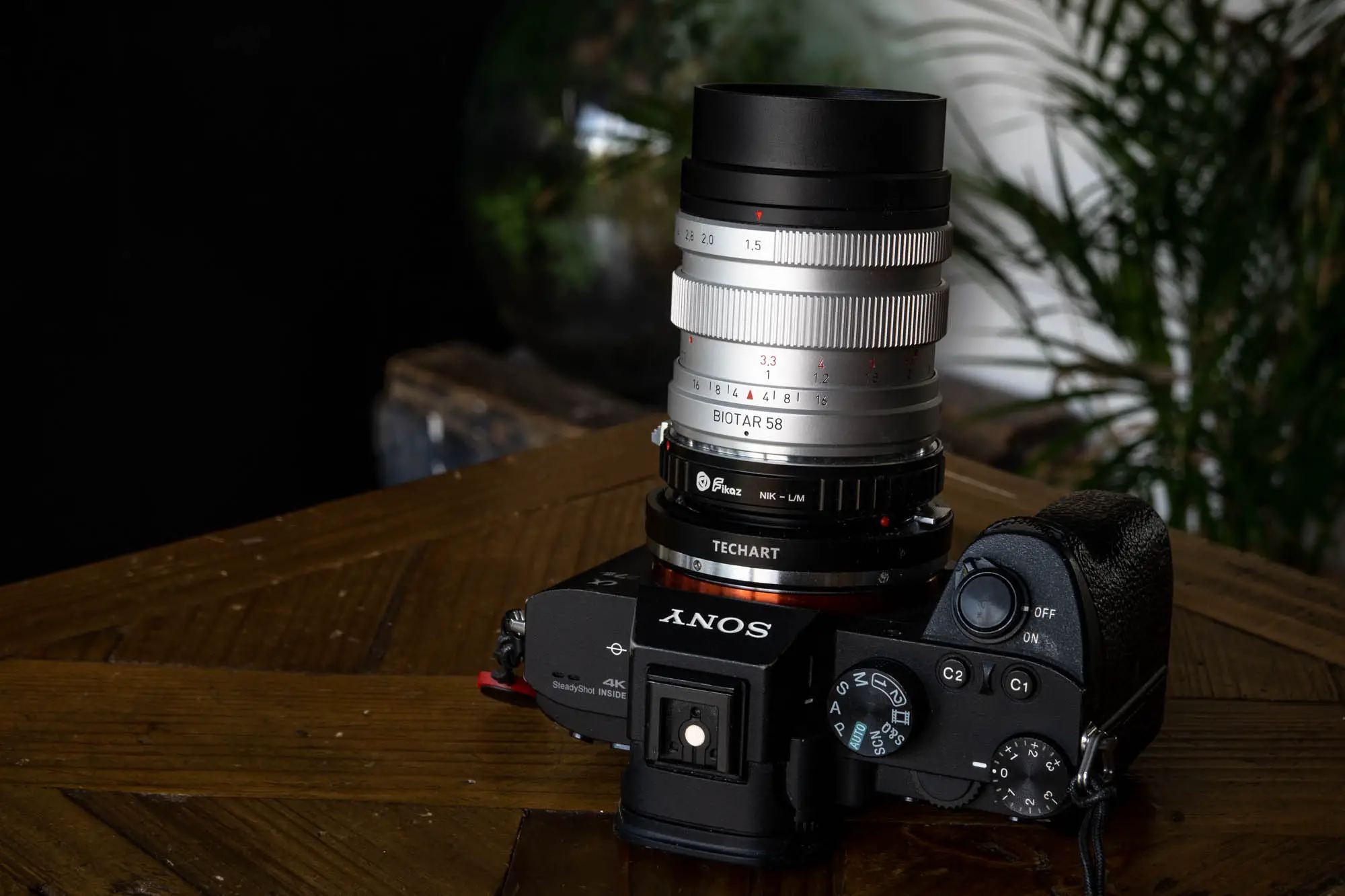








Comments
Ibraar Hussain on Meyer Optik Görlitz 58mm f/1.5 Biotar II (The New Version) Review
Comment posted: 20/02/2023
Nice review
Very pleasing soft oof areas and really like the flare
The trouble with the focal length (inc 55mm ones) is that it’s too long to be ‘normal’ and too wide to be a proper portrait lens
Seems to be an extra bonus luxury lens for very nice people shots - a nice addition to the arsenal if one can afford it ! Thanks
JL Williams on Meyer Optik Görlitz 58mm f/1.5 Biotar II (The New Version) Review
Comment posted: 20/02/2023
Comment posted: 20/02/2023
Dirk Saeger on Meyer Optik Görlitz 58mm f/1.5 Biotar II (The New Version) Review
Comment posted: 21/02/2023
We are happy to own a black 17 blade with a M42*1 thread mount and ejoy using it.
https://robin-oslo.com/wp-content/uploads/2022/06/N787883.jpg
Greets
Dirk
Marc Gordon on Meyer Optik Görlitz 58mm f/1.5 Biotar II (The New Version) Review
Comment posted: 28/02/2023